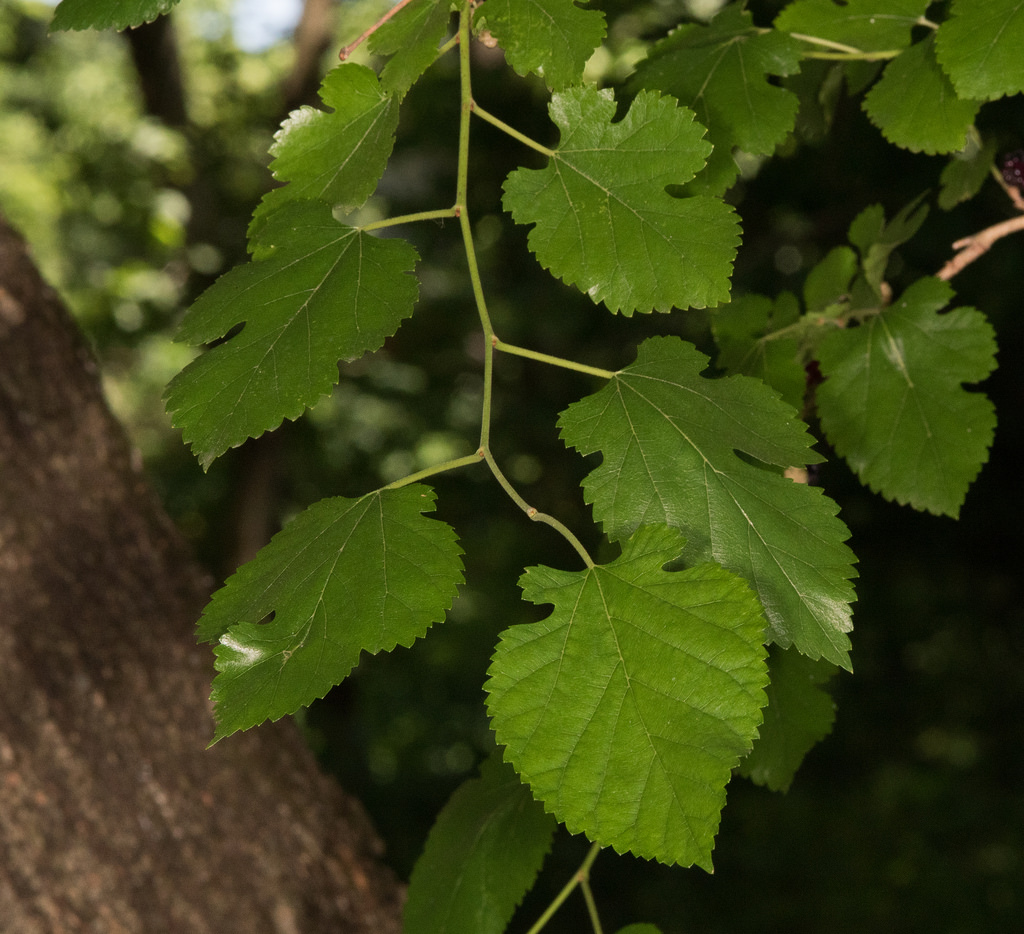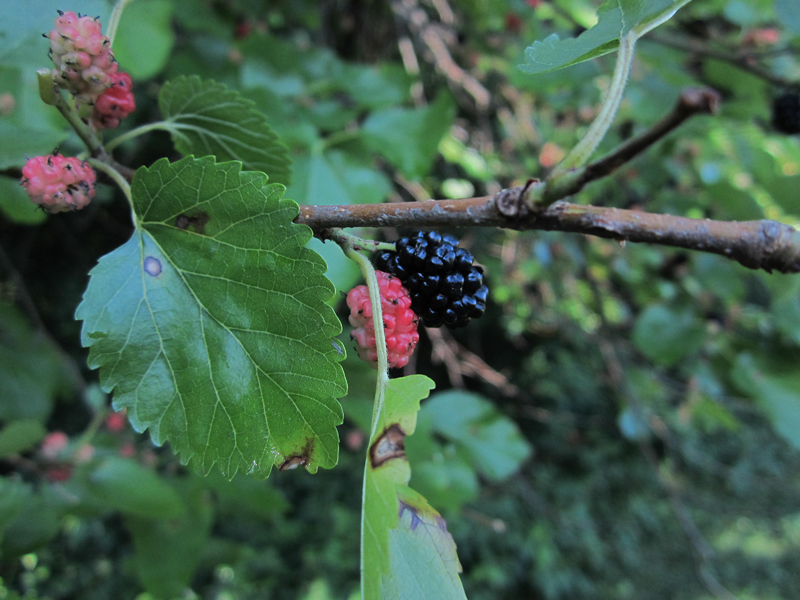White Mulberry
Morus alba L.
Description
White mulberry belongs to the mulberry family (Moraceae) and has several other common names including Chinese white mulberry, silkworm mulberry and Russian mulberry ¹. It forms a small to medium tree that can reach heights of 60 feet ². Its bark is grayish-brown with flattened ridges ³. The alternate leaves are oval, is 2 to 7 inches long, has serrate to coarsely toothed margins and may be unlobed to several several lobed ¹. The leaf petiole exudes a milky sap when broken ². Trees are either male or female (dioecious), but may have both ². The inconspicuous flowers are found in catkins. The fruit resemble blackberries, but is actually formed from several flowers (multiple fruit). The fruits are white, to purple to black ².
Trunk and bark of white mulberry. J. Solem, Maryland Biodiversity Project 4
Leaves of white mulberry. M. Etheridge, Maryland Biodiversity Project 4
Fruits of white mulberry. J. Solem, Maryland Biodiversity Project 4
Distribution
White mulberry is an introduced species from China that was planted for silk worm production. It is currently found in all states in the USA except Nevada and Alaska and several provinces of Canada. It is found throughout Maryland where to os considered to be invasive 4.

Distribution of white mulberry. Wild Foods Home Garden 5
Wildlife Importance
Numerous birds consume the fruit and spread the tree. Additionally opossums, squirrels, deer and raccoons consume the fruit ³. White mulberry readily hybridizes with the native red mulberry 5.
Economic Importance
White mulberry leaves are consumed by silk moths, which is the reason for their importation ¹. The wood is flexible and used for tennis, and badminton rackets and hickory sticks ¹. The fibrous wood is used to make paper ¹.
Threats
As a nonnative tree, it has few threats.
Interesting Facts
- George Washington planted white mulberry trees at Mt. Vernon in 1785 that was still alive in 1990 ².
- Leaves of white mulberry have been used to treat the common cold, sore throat and nose bleeds. ¹.
- To promote the silk worm industry, the legislature of Virginia in 1624 required every male resident to plant four white mulberry trees ¹.
References
- USDA NRCS Plant Guide: White mulberry
- Fire Effects Information System: Morus alba
- North Carolina State Extension: Morus alba
- Maryland Biodiversity Project: White mulberry
- Wild Foods Home Gardens: Mulberries
Contributed by J. Hull



